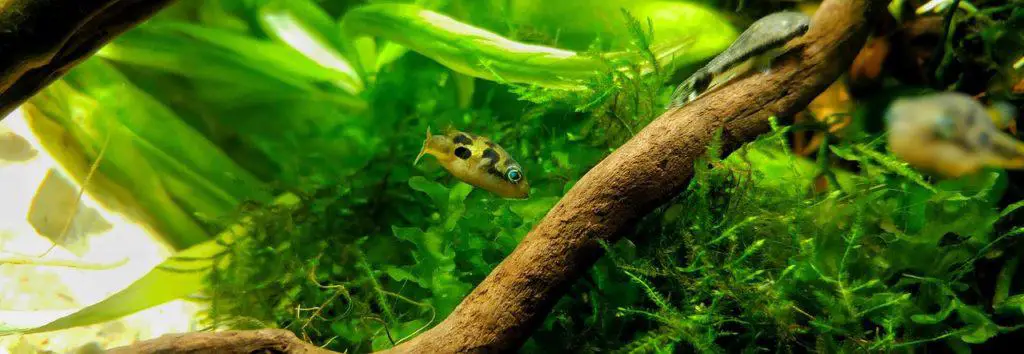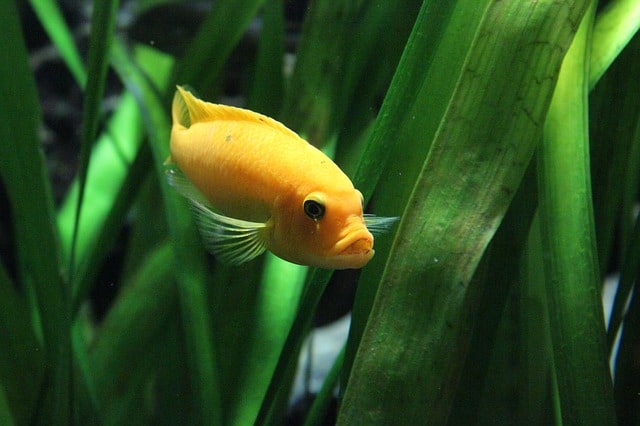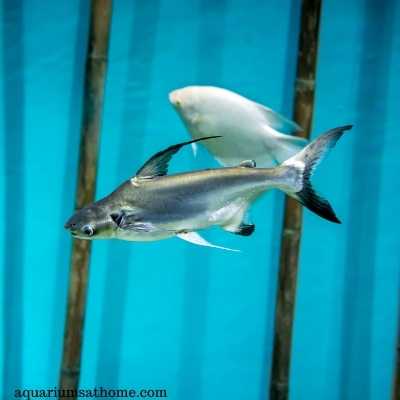I recently started getting more into live planted tanks. I have always been into plants and now want to expand my knowledge and experience in freshwater live plants. I don’t know about you but when I see lush planted freshwater tanks that are also manicured, it’s just so beautiful and enjoyable to watch. I have been seeing a lot of questions online regarding whether planted tanks need filters or not.
Do planted tanks need filters? Planted tanks do not require filters, however, it is more favorable to use a filter. It is more acceptable if the ratio of plants to fish is skewed highly in the plants favor. There are good reasons to include a filtration system on your planted tank. There are pros and cons to both options.
There are two really good arguments as to why and how you could go without a filter on a planted tank. There is also good reason why you should have filtration on your tank. Below we will explore both so you can make the right decision for your situation.
When it’s Okay to Not Have an Aquarium Filter in a Planted Tank
Have you heard of dark or black water tanks yet? These are aquarium set-ups that primarily have live plants. Along with the live plants, you might find some shrimp and occasionally one fish, which is usually a Betta fish. Betta fish are better suited for aquariums that do not have strong water circulation as it makes it easier for them to navigate the tank.
With an aquarium that has a very low bio-load coming from waste (poop) and excess food for the fish and inhabitants, there isn’t as much carbon dioxide being produced and the water parameters for ammonia, nitrite and nitrate aren’t rising to dangerous levels.
Having a tank set-up up like this allows the live plants the opportunity to absorb most (if not all) of the carbon dioxide while the plants go through photosynthesis. Your live plants will then produce oxygen which is beneficial for the health or your fish, plants and tank. This natural process occurs typically during the day time when the aquariums lights are turned. This is a very good reason to have the correct lighting to encourage live plants to grow.
It is worth mentioning that even if you only have a few plants and aren’t trying to get away without having a filter, you should have sufficient lighting. It not only promotes plant growth but will be beneficial to your fish as well as viewing pleasure.
Now whether you want a black water tank or not, if you are going to try to forego operating a filter, you must have as many plants as possible. Otherwise, your aquarium will start looking like a bit of a swamp with murky gross water. The plants will help a bit with water conditions.
If you end up going with no filter and have fish, make sure to do weekly water changes, vacuuming the substrate to get rid of excess waste (poop) and food. I would recommend replacing at least 25% of the water every week.
Why it’s a Good Idea to Have a Filter on Your Planted Tank
If you don’t run any filtration on your tank, it will be very hard to have crystal clear water that you want to spend hours watching. Filters offer so much more than live plants could ever offer. Even if you wanted to run a tank with no to low circulation, you still need a filter. That’s my opinion and here’s why.
- The number one reason I can think of that is probably not on most aquarium hobbyists radars (but should be) is creating a current in the water that forces oxygen into the water which benefits the tank as a whole. Here is how that works.
- When the water is sucked into the filter then forced out, it creates water circulation which causes some agitation at surface level. Water agitation at surface level releases carbon dioxide from the tax and allows oxygen into the water. It is essentially gases changing place.
- Now you could use a powerhead to accomplish this as well, or just for the added water circulation. Powerheads do not provide any filtration. So be aware of that.
- Having a filter means mechanical filtration happens and your tank will look so much nicer because of it. In aquarium filters, you should find a material which is either a sponge or a cotton looking material.
- These filter media will trap pieces of debris floating around in your tank. This will help clear your water for your viewing pleasure .These areas of the filter are also great places for beneficial bacteria to grow. Beneficial bacteria means a healthy tank for all inhabitants.
- Filters can also provide chemical filtration by way of activated carbon/charcoal. Charcoal in a filter will absorb and clean toxins out of the water. That’s the good side of charcoal. If you are ever treating a tank with medication, charcoal will absorb the medication. Make sure to take charcoal out of filters when treating the tank.
- Any other nutrients you are adding to the water will also be partially absorbed by the charcoal. It all depends on how much charcoal and how old the charcoal is regarding how much it will absorb. I use charcoal in my live planted tank as I don’t fertilize the plants yet and if I do end up fertilizing, I would use a product that can be placed in the substrate for the plants roots.
Can You Use an Under-Gravel Filter in a Planted Tank?
I wouldn’t recommend using an under-gravel filter in your planted tank.
The roots of the plants will grow into the filter. This will slow or minimize the amount of water flow as the roots get longer. Moving plants around if the roots are embedded into the filter could cause damage to the roots when pulling on them.
Even if you keep plants in some type of pot made for aquariums, the roots grow through. Then you will have the problem just mentioned above.
In my live planted tank I keep the plants in the containers I purchased them in only because I think I will be changing the substrate soon. The roots have grown through the mesh material quite easily.
What is the Best Filter for a Planted Aquarium?
The best filter for your aquarium will depend on the size of the tank and placement of the tank.
Smaller tanks up to 50 gallons can easily get away with a hang on back filter (HOB for short). HOB filters are very affordable and there are some really great brands out there. I have used Aqua-Clear for years with no problem. They are affordable and reliable.
If I was asked to recommend a model I would go with this one from Amazon which has different sized filters for different sized tanks. Please check it out. Aquaclear It is very reasonably priced and extremely reliable from my experience.
Aquaclear even makes models for tanks over 50 gallons. I know I mentioned HOB’s are great for up to 50 gallons but, truth be known, a properly fitted filter for a larger tank will do just fine. You might just want to add a powerhead to the opposite side of the tank for circulation.
Hang on back filters take up three to four inches at the back or side of the tank depending on where you place it. This means you won’t be able to place your aquarium right against a wall if that’s your desire.
A great option for tanks 30 gallons and up is a canister filter. These filters are a bit more money than the HOB’s. They provide excellent circulation as you can place the intake and outlet hoses almost anywhere you want. This means you can place the hoses strategically for water flow and filtration.
Canister filters are very easy to service. Usually the canister sits underneath the aquarium in a cabinet or off to the side. Accessibility for maintenance is usually not a problem for these types of filters.
Conclusion
And there you have it! Even though you might be able to get away without a filter on a planted tank it’s not always the best thing to do. Plants do help keep aquarium water healthy but usually it’s just not enough.
The benefits of using a filter outweigh not using one even with a heavily stocked planted tank. So the only decision left for you is whether you go with a HOB filter or a canister style filter? Good luck and happy fish keeping!
Related Aquariums-at-Homes Articles.
Should Aquarium Filters be Left On?
Do You Need a Heater in a Tropical Fish Tank?
Surface Skimmer VS Protein Skimmer – What’s the Difference?






